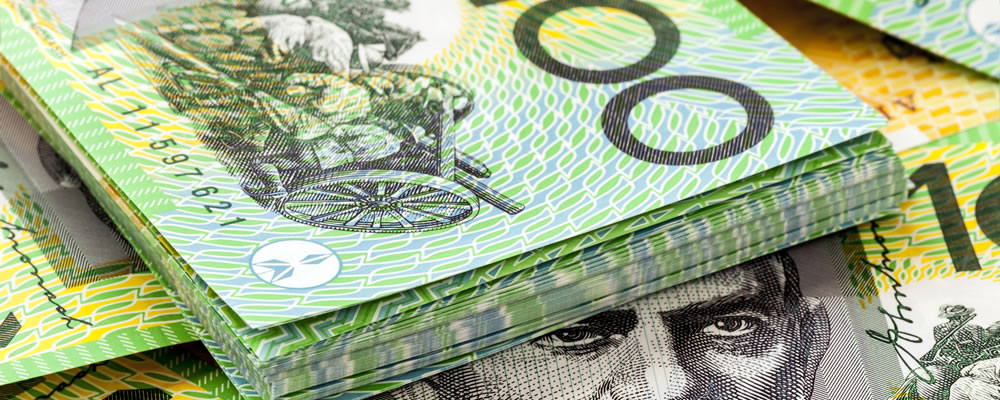- German trade surplus narrowed further than forecast – Euro softened as confidence in Eurozone dipped
- US Non-Farm Payrolls strengthened bullishly in June – Poor underlying wage growth benefitted Australian Dollar
- Falling Australian Home Loans figure prompted ‘Aussie’ downtrend – Outlook of domestic economy remained muted
- Improved NAB Business Confidence forecast to dent EUR AUD exchange rate – Improved sentiment likely to shore up antipodean currency
Eurogroup Confidence Boosted EUR AUD Exchange Rate
Demand for the Euro (EUR) was boosted in the wake of the latest Eurogroup meeting, after an expression of confidence in the outlook of the Italian banking sector. Although finance ministers also reiterated the need for Italy to abide by current Eurozone regulations this failed to prevent the EUR AUD exchange rate from making bullish gains, trending higher in the region of 1.4663.
(Previously updated at 10:46 on 11/07/2016)
While confidence in the single currency has remained somewhat jittery, the EUR AUD exchange rate surged on Monday morning, thanks to weak Australian data.
Disappointing German Trade Balance Weighed on Euro (EUR) Demand
Demand for the Euro (EUR) weakened substantially ahead of the weekend, with worries over the future of the currency union continuing to mount in the wake of the UK’s vote for Brexit. Investors were unimpressed to find that the German trade surplus had narrowed much further than forecast in May, from 25.7 billion to 21.0 billion Euros. This was largely caused by a sharp and unexpected contraction in exports; a discouraging sign considering the turmoil that has since gripped markets and likely exacerbated existing slowdown pressures.
The single currency was further dented by a stronger-than-expected rebound in the US Non-Farm Payrolls report, even though the chances of an imminent Fed interest rate hike remain slim. While the headline figure showed a solid improvement from 11,000 in May to 287,000 in June this was somewhat undermined by disappointing wage growth. As a result confidence in the US Dollar (USD) remained a little muted, benefitting the commodity-correlated ‘Aussie’ (AUD).
With the results of the Australian federal election also pointing towards the Coalition remaining in power, there was little to prevent the Euro to Australian Dollar (EUR AUD) exchange rate ending the week on a weaker footing.
Australian Dollar (AUD) Slumped after Weaker Chinese Inflation and Domestic Data
Although the Chinese Consumer Price Index for June did weaken from 2.0% to 1.9% as anticipated this did not seem to particularly spook markets. While inflation in the world’s second largest economy had slowed modestly investors were reassured that a rebound is likely, as recent floods are likely to drive food prices higher over the coming months. Researchers at ANZ noted:
‘A stabilisation in prices means the PBoC is expected to be less aggressive with monetary policy. This means fiscal policy will be back in the picture to help drive growth. It’s a similar situation across the Tasman with a liberal/national coalition being formed.’
However, the bullishness of the Australian Dollar was limited by a surprisingly poor May Home Loans figure, which showed a contraction of -1.0%. As this pointed towards a softening in the domestic housing market, as well as economic confidence, the weak showing prompted the EUR AUD exchange rate to make fresh gains on Monday morning.
EUR AUD Exchange Rate Forecast: Stronger Business Confidence Predicted to Shore up ‘Aussie’
Tomorrow’s NAB Business Confidence Index is likely to provoke further ‘Aussie’ volatility, although any sign of improved sentiment would be expected to shore up demand for the antipodean currency. Also of note will be the latest credit card data and a speech from Luci Ellis; Head of Financial Stability Department at the Reserve Bank of Australia (RBA). Suggestions of greater confidence in the outlook of the domestic economy could well boost the Australian Dollar again.
Investors are not expected to pay particular heed to the finalised German Consumer Price Index for June as there is no change anticipated. However, the reminder of the fragility of the inflationary outlook in the Eurozone’s powerhouse economy could prompt fresh Euro weakness. Anxiety over the future of the Italian banking sector, and the European project at large, is also expected to remain a downside pressure on the single currency.
Current EUR, AUD Exchange Rates
At the time of writing, the Euro to Australian Dollar (EUR AUD) exchange rate was making gains around 1.4627, while the Australian Dollar to Euro (AUD EUR) pairing was slumped in the region of 0.6835.



